What will Yunnan farmers do when the rain stops?
 |
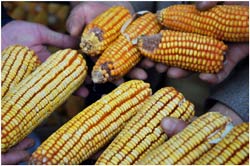 |
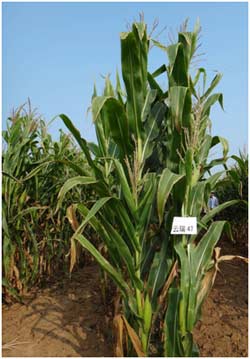 |
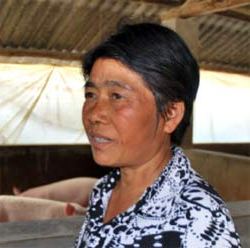 |
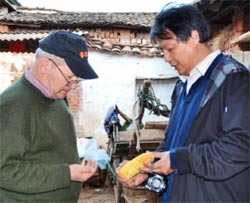 |
Farmers in Yunnan Province are increasingly reacting to climate change by using maize seed for drought conditions developed by CIMMYT in collaboration with the Yunnan Academy of Agricultural Sciences.
Forming part of southwest China’s rugged terrain, the Yunnan Province mountain chains create spectacular vistas in every direction. Unfortunately, the scenic landscapes also make life tough for farmers. Only 5% of the province is cultivated land. Still, agriculture is a pillar of the provincial economy, and maize is the most commonly grown crop.
Faced with a mean elevation of over 2,000 meters and average slopes as steep as 19 degrees, Yunnan farmers have adapted by growing maize on the hills and mountains. This so-called “down-slope cultivation” has fed Yunnan for generations, but it has drawbacks, like increased erosion. Yunnan is one of the areas in China most seriously affected by erosion.
Missing the monsoon?
Besides their tremendous ability to adapt, farmers have one other ally in the continual struggle to grow maize in this unlikely environment: the monsoon. Yunnan Province has a subtropical climate and an average annual rainfall of more than a meter—very generous for maize—and most of which normally falls during the growing season, May to October.
But today’s farmers in Yunnan have a new concern: what happens when the monsoon fails to appear? It’s not a hypothetical question. In 2010, severe weather in southwest China resulted in the region’s worst drought in a century. In the months prior, large swaths of Yunnan hadn’t received adequate rainfall. Then the rainy season ended early, temperatures rose, and drought set in, ultimately affecting more than 60 million people and destroying billions of dollars worth of crops. In 2011, drought re-occurred in eastern Yunnan, affecting a large area of maize.
Now farmers are left wondering if these phenomena are flukes or part of a larger trend. In fact, climate change models suggest the fluctuations in rainfall will continue and increase in intensity. Yunnan’s maize farmers may no longer be able to count on the monsoon.
Better maize: Part of the answer
The solution, put simply, is to change. And helping farmers to change from the only thing they’ve ever known takes patient expertise. Some of that has come from a team led by Dr. Fan Xingming, Director General, Institute of Food Crops, Yunnan Academy of Agricultural Sciences (YAAS), in partnership with CIMMYT.
Drawing on sources from CIMMYT’s maize and wheat seed bank—which conserves 27,000 unique collections of maize seed—Fan and his group have developed 22 hybrids, several of which possess improved performance under drought and multiple disease resistance. Because they produce consistently higher yields and better incomes for Yunnan farmers, the hybrids have been a hit. Today they cover approximately 200,000 hectares—15% of Yunnan’s annual maize area—and have increased farmers’ incomes by approximately USD 200 million between 2000 to 2010. One of those developed, Yunrui 47, is drought tolerant and performed well in 2011 in severely droughted areas in Yunnan, including Zhaotong, Wenshan, Xuanwei, and Huize.
Some are more resistant to insect infestation and rot than older maize varieties. Because of this, their grain can be stored longer. Instead of selling their harvest in January when prices are low, farmers can keep it until June, when prices are better. The hybrid Yunrui 88 is high-yielding and resistant to several of the region’s most damaging maize diseases, according to Dan Jeffers, a CIMMYT maize breeder based in Kunming. “Yunrui 88 has been highly resistant to maize dwarf mosaic, resistant to leaf blights, and shows intermediate resistance to ear rot,” he says. “In addition, it yields an average of around 9 tons per hectare of grain.”
Another of the hybrids, Yunrui 8, is an example of quality protein maize, a high-lysine and high-oil hybrid that is more nutritious for humans and farm animals, as well as being highly resistant to ear rots. Yunrui 8 has been recommended by the Ministry of Agriculture of China as the leading national variety in 2010. It is the most popular hybrid in Yunnan, with a cumulative coverage of 0.5 million hectares in the province.
Farmers have testified to the nutritional quality of the hybrid grain. Huan Yuanmin and her husband grew Yunrui 8 on 4.6 hectares for 3 years. Utilizing the profits from their surplus harvests, they bought 200 pigs and fed them hybrid maize grain. “We noticed that with the hybrid maize, our animals grew faster and were more robust,” says Huan. “The sows gave more milk, so suckling pigs could be weaned three-to-five days ahead of the normal of 28 days.” This in turn raised the family’s profits. “Even the skin and hair of the pigs became shinier,” she added.
International partnerships bring benefits for farmers
Staff of YAAS began collaborating with CIMMYT in 1976. Over the decades, that relationship was strengthened by the personal visits of CIMMYT regional maize staff and the late Nobel Peace Prize Laureate and wheat breeder, Dr. Norman Borlaug. According to Fan, CIMMYT germplasm was the basis for Yunnan’s strong maize production and breeding program. “CIMMYT experts have helped Yunnan in many ways, including training and sharing expertise,” he said. “I really appreciate this and sincerely hope we can continue cooperating, progressing in maize breeding, and developing more hybrids that will allow farmers to contribute to the food security of people in less developed areas.”
For more information: Dan Jeffers, maize breeder (d.jeffers@cgiar.org)
Related story:
- HarvestPlus-China field day exhibits maize hybrids in southwestern China
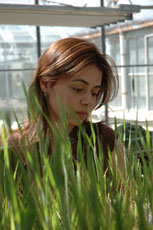 Erginbas is just beginning work on a project to screen wheat for resistance to a disease called crown rot. It is caused by a microscopic fungus in the soil called Fusarium culmorum (related to but not the same as the Fusarium fungus that causes head blight in wheat) and can cause farmers serious loss of yield. Her first tests have been with plants grown in a greenhouse on the station. Later she will expand her work to the field and as part of her program will spend some time in Australia with the Commonwealth Scientific and Industrial Research Organization (CSIRO). Since there is some evidence that the fungus that causes crown rot can survive for up to two years in crop residues, there is a great interest in this work as more farmers adopt reduced tillage and stubble retention on their land.
Erginbas is just beginning work on a project to screen wheat for resistance to a disease called crown rot. It is caused by a microscopic fungus in the soil called Fusarium culmorum (related to but not the same as the Fusarium fungus that causes head blight in wheat) and can cause farmers serious loss of yield. Her first tests have been with plants grown in a greenhouse on the station. Later she will expand her work to the field and as part of her program will spend some time in Australia with the Commonwealth Scientific and Industrial Research Organization (CSIRO). Since there is some evidence that the fungus that causes crown rot can survive for up to two years in crop residues, there is a great interest in this work as more farmers adopt reduced tillage and stubble retention on their land.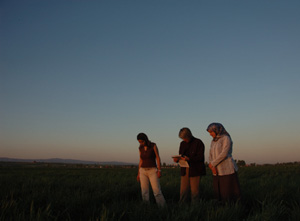 These pathogens are especially damaging when wheat is grown under more marginal conditions, and so the work in Turkey that these two young students are doing may have its greatest impact where farmers struggle the most.
These pathogens are especially damaging when wheat is grown under more marginal conditions, and so the work in Turkey that these two young students are doing may have its greatest impact where farmers struggle the most.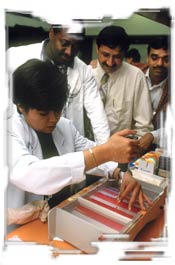 A USAID-funded study by Rutgers economist Carl Pray concludes that present and future impacts of the Asian Maize Biotechnology Network (AMBIONET)—a forum that during 1998-2005 fostered the use of biotechnology to boost maize yields in Asia’s developing countries—should produce benefits that far exceed its cost.
A USAID-funded study by Rutgers economist Carl Pray concludes that present and future impacts of the Asian Maize Biotechnology Network (AMBIONET)—a forum that during 1998-2005 fostered the use of biotechnology to boost maize yields in Asia’s developing countries—should produce benefits that far exceed its cost.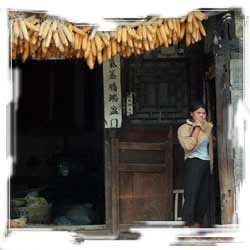 The demand for maize in Asia is expected to skyrocket in the next two decades, driven primarily by its use for animal feed. In the uplands of seven Asian countries, however, demand is also increasing in the farming households who eat the maize crops they grow. CIMMYT and the
The demand for maize in Asia is expected to skyrocket in the next two decades, driven primarily by its use for animal feed. In the uplands of seven Asian countries, however, demand is also increasing in the farming households who eat the maize crops they grow. CIMMYT and the 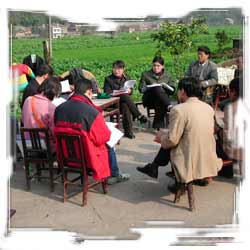
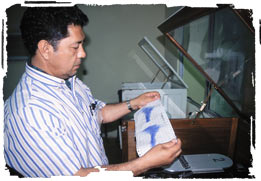 CIMMYT’s wheat quality lab expands and upgrades to meet growing demand of wheat for diverse food uses.
CIMMYT’s wheat quality lab expands and upgrades to meet growing demand of wheat for diverse food uses.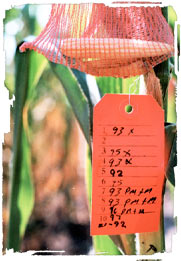 A new genomic map that applies to a wide range of maize breeding populations should help scientists develop more drought tolerant maize.
A new genomic map that applies to a wide range of maize breeding populations should help scientists develop more drought tolerant maize.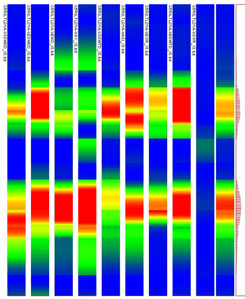
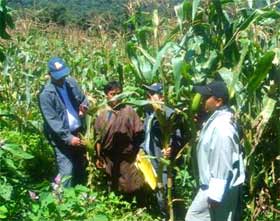 Sandwiched between China and India, the Kingdom of Bhutan is a small country that relies on maize in a big way. But maize yields are typically low due to crop diseases, drought, and poor access to seed of improved varieties, among other reasons. CIMMYT is committed to improving Bhutan’s food security by providing high-yielding, pest-resistant maize varieties to farmers and capacity-building for local scientists.
Sandwiched between China and India, the Kingdom of Bhutan is a small country that relies on maize in a big way. But maize yields are typically low due to crop diseases, drought, and poor access to seed of improved varieties, among other reasons. CIMMYT is committed to improving Bhutan’s food security by providing high-yielding, pest-resistant maize varieties to farmers and capacity-building for local scientists.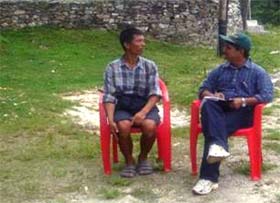
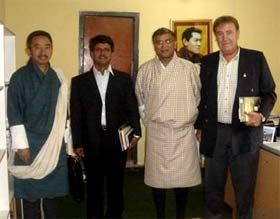 “Our CIMMYT office in Nepal has assisted Bhutan with maize and wheat genetic material, technical backstopping, training, visiting scientist exchange, and in identifying key consultants on research topics such as grey leaf spot and seed production,” says Tiwari.
“Our CIMMYT office in Nepal has assisted Bhutan with maize and wheat genetic material, technical backstopping, training, visiting scientist exchange, and in identifying key consultants on research topics such as grey leaf spot and seed production,” says Tiwari. US Secretary of State Colin Powell paid tribute to Iowa and in particular to one man, known as the father of the Green Revolution, who was born there 90 years ago.
US Secretary of State Colin Powell paid tribute to Iowa and in particular to one man, known as the father of the Green Revolution, who was born there 90 years ago.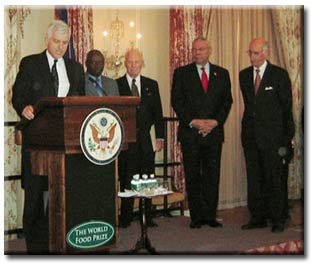

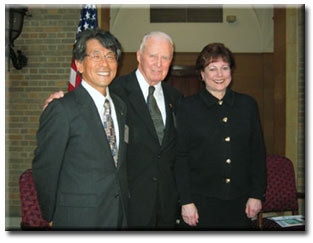
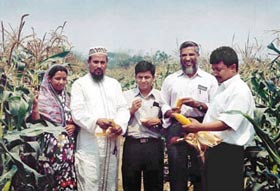 Demand for maize has popped up across Asia, but much of the grain is enjoyed by poultry, not people. In Bangladesh, maize is a fairly new crop, yet demand in this country already mirrors that of neighboring nations like China and India. A recent CIMMYT report explores these emerging trends and the efforts to incorporate sustainable and economically viable maize cropping systems into a traditionally rice-based country.
Demand for maize has popped up across Asia, but much of the grain is enjoyed by poultry, not people. In Bangladesh, maize is a fairly new crop, yet demand in this country already mirrors that of neighboring nations like China and India. A recent CIMMYT report explores these emerging trends and the efforts to incorporate sustainable and economically viable maize cropping systems into a traditionally rice-based country.